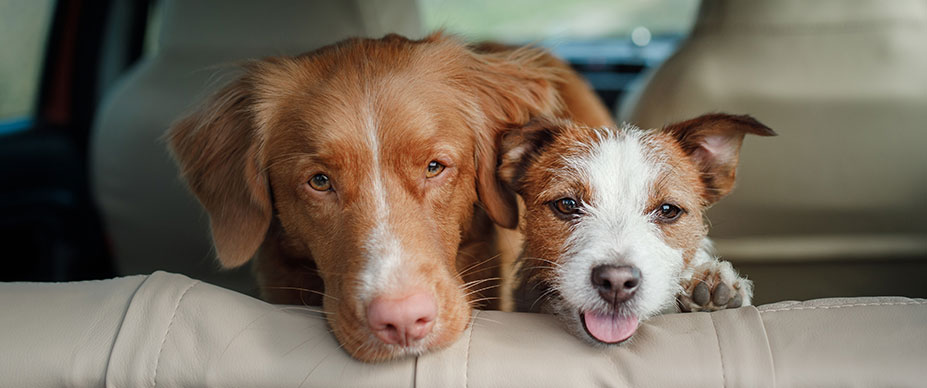How to Help Dog Car Sickness
Motion sickness doesn’t just affect humans! If your pup appears uncomfortable whenever you take a ride, they may be experiencing car sickness. Whether you’re traveling with your pet for the first time or simply heading to a vet appointment, you’ll want your pooch to be a car champion—no matter how long or short the journey. Follow these tips to help manage your dog’s car sickness!
What Causes Dog Motion Sickness?
According to WebMD, motion sickness is the feeling we get when there are conflicts among our senses. When you are on a roller coaster, for example, your muscles may feel one thing while your eyes and ears experience another. These mixed signals cause that dizzy feeling that often leads to sickness. While a dog’s physical reaction to being in a moving car is typically the result of an unbalanced equilibrium, some of their symptoms may also be a reaction to the situational stress.
Dog Car Sickness Symptoms
Dogs that get car sick may display a range of behaviors, from physical discomfort to actions that relieve anxiousness, such as licking their own paws. Other signs your pooch may be experiencing motion sickness include:
- Excessive drooling
- Inactivity
- Licking their lips
- Uneasiness
- Vomiting
- Whining
- Excessive yawning
If your dog continues to present symptoms long after the car ride is over, you'll want to have your veterinarian evaluate them to see if there is anything more serious going on.
RELATED: The Best Vitamins for Your Dog's Health and Wellness
Tips for Preventing Dog Motion Sickness
There are a few different remedies and tricks you can try that will help prevent your dog from getting car sick the next time you both need to head out.
Tip #1: Create a positive experienceCar sickness is often a response to your dog’s traveling nerves. You’ll want to positively reinforce the experience of getting in the car so that your pup feels excited when it’s time to go. You can buy some special toys they only get in the car or provide your pup with a yummy chew treat after the ride is finished!
Tip #2: Use supplements or medications
If you plan on taking a road trip or going anywhere that requires extended time in the car, consider providing your furry friend a soothing supplement beforehand. Healthy Promise® Calming Aid for Dogs features a 7X SuperBlend with ingredients including L-tryptophan to support your pooch’s stress response and ginger root extract to help keep their stomach settled. You can also ask your veterinarian for a sedative or medication specially made to treat nausea and vomiting if needed.
Tip #3: Build your dog’s tolerance
You can help your furry friend’s body adjust to motion by taking fewer and shorter trips their first few times in the car. You’ll also learn how long your pup can go before they start to feel sick. This will help pre-plan stops on future trips so your dog can get out and have a little break.
Tip #4: Face your dog forward
Facing forward in the car is often recommended to help prevent motion sickness because it reduces the number of conflicting signals the body is receiving. Attach your pup to a seat belt in the back and talk to them throughout the drive to keep them looking in a forward direction.
Tip #5: Lower the windows
Getting some air is a “cure” that many people will use for motion sickness! The cooling air can feel refreshing if your dog experiences nausea. Plus, it may even provide your pooch with a distraction while traveling.
Stay Prepared!
Your furry friend’s car nerves can (unfortunately) come out in a few different ways, so it’s best to be prepared for anything. Keep extra waste bags in the car in case of an emergency and even consider lining your seats with Wee-Wee® Pads for protection. Now that you know how to manage dog car sickness, you and your travel buddy will be ready for your next adventure in no time!
If your dog struggles with incontinence, traveling in the car can seem extra daunting. Learn how to best manage this condition.









